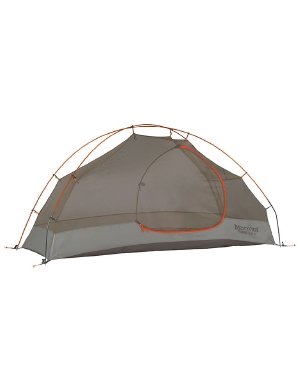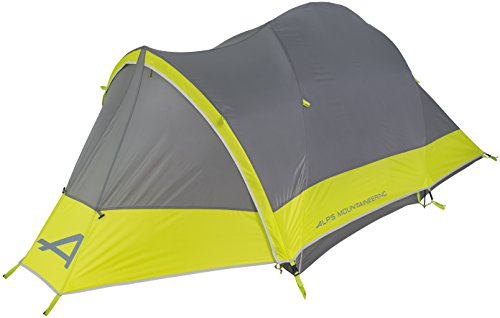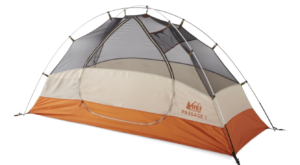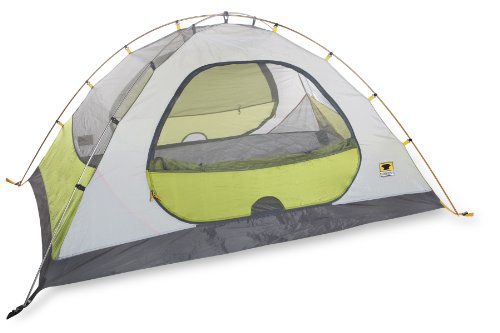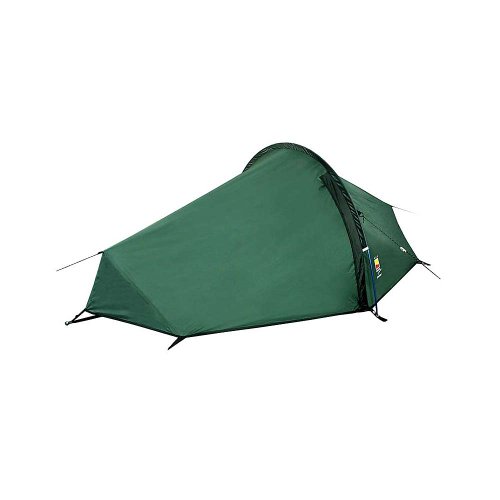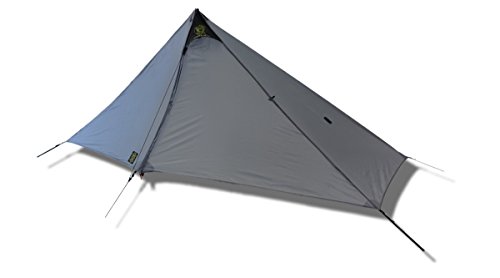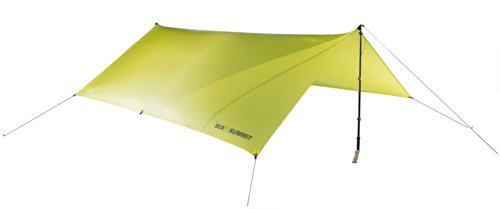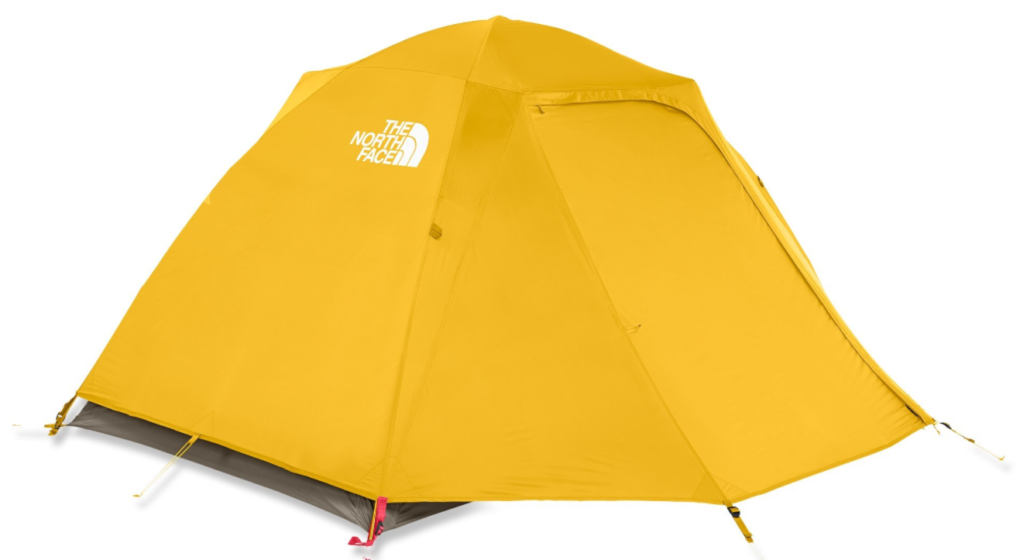
April, 2017: Not all of us can afford to spend an entire paycheck on a backpacking tent, but that shouldn’t keep any of us from getting out there.
Whether you’re gearing up for a weekend on the lake with friends, a few days solo through the mountains or even a thru-hike, you’ll need a tent (unless you’re into just rolling out your sleeping bag in the dirt, and hey, that’s cool too!)
The best backpacking tents will keep you dry from the rain, safe from the wind, and can keep those pesky mosquitos at bay, allowing you to get a good night’s sleep so you wake up refreshed and ready to tackle that 3,000-foot climb to the summit.
What type of tent you choose depends on a number of factors, such as who you’re trekking with, the weather conditions, your budget and even the rest of your gear arsenal. So to help make this decision easier, I’ve broken the list of tents into three categories (just click on which one is right for you):
Looking for the absolute best tent? Then check out our Ultimate Guide To the Best Backpacking Tents instead.
One-person tents
So you’re flying solo. That’s great!
Getting out there alone can be an extremely rewarding experience. Some of my favorite adventures in the outdoors have been when I’m marching to the beat of my own drum. In addition to costing a little less, one-person tents have the added advantage of being a few ounces lighter (so you can stuff a few extra candy bars in your pack, of course).
This one-person freestanding backpacking tent from Marmot is great for those who enjoy spending time at camp relaxing with a book, studying the stars, or just enjoying the view.
The three-season tent has vertical walls, is tall enough for most people to sit up in, and has plenty of space left inside for your pack. Hanging out in this tent won’t leave you feeling like a hermit crab stuck in a tiny shell.
It’s even got a built-in “lampshade pocket” which is a small fabric-covered pouch that diffuses the light from your headlamp. Instead of an ultra-bright, ultra-focused beam of light you can soften the source and illuminate the whole tent!
The rainfly and inner bug mesh can each be set up on their own, effectively making this three tents in one. Clear skies? Just set up the tent body, made of no-see-um mesh to keep the bugs at bay. Want more of a breeze while you sleep? Omit the tent body and sleep under the protection of the rain fly.
At just 3 lbs 8 oz and $179.00, the Marmot Tungsten is a real winner, and it won’t even break the bank. Plus it’s easy to set up so once at camp, you’ll already be a few minutes closer to eating that macaroni and cheese you’ve been dreaming about all day.
Ever been woken up in the night by raindrops falling on your face? And had to unzip your sleeping bag, open the door, put your shoes on, and start walking around your tent to secure on the rain fly? Well your troubles are over, dear backpacker, with this one-person, three-season tent from ALPS Mountaineering.
The rain fly conveniently rolls up to expose the back half of the tent, great for those starry nights up on a ridge, and should you be awoken in the throes of your epic superhero dream all you need to do is reach into the corner and pull on the fly access zippers—without so much as unzipping your sleeping bag.
Mesh pockets are included on both ends of the tent so you can sleep with your head to the stargazing side or towards the front while keeping your headlamp and knickknacks close by.
The tent features a large hooped vestibule, located in the front of the tent, with 7 square feet of storage space so you’ve got plenty of room to access your pack.
Weighing in at 5 pounds,the ALPS Mountaineering Hydrus 1 will cost you $199.00. But is a great all-around tent.
REI’s newest backpacking tent is sure to quickly become a classic choice. At 3 lbs 6.2 oz it’s the lightest in the one-person category, not to mention the most affordable! With a cross-pole design it’s intuitive and easy to set up. (More time for macaroni and cheese, anyone?)
It’s got lots of storage space, including a mesh ceiling hammock and mesh side pockets. Plus it’s equipped with a light hook so you can hang your headlamp or camp light right from the ceiling.
Even tall folks will feel at ease in this tent. It’s roomy enough for those well over 6” tall to sit up straight in, with a few inches to spare.
The fly has a vented opening at the top to keep the air fresh, and like the Marmot Tungsten this tent can be set up in a fly-only configuration. The matching footprint (sold separately) can then be attached to the poles for a dirt-free camp.
At $139.00 it’s a great budget tent but may not be the best choice for the high winds you might experience on an exposed ridgeline. Lightweight as they are, the aluminum poles are known to give a little too much in such conditions. But considering the cost, weight, and ease of this tent, the REI Co-OP Passage 1 is a great choice.
Two-person tents
Heading outdoors with your partner, or maybe a furry friend?
Or maybe you’re on your own but want a little more space and comfort in your woodland home. Then check out these two-person tents, all of which will keep you cozy in three-season conditions.
This award-winning tent gets just about everything right: easy and quick set up, well-constructed, lightweight, has lots of useful features, and roomy enough even for those tall folks.
With color-coded poles and fly attachments it’s intuitive to pitch. And if that’s not enough, the set-up instructions are printed right on the stuff sack so you’ll never have to worry.
Weighing in at 4 lbs 11 oz, this tent is fairly lightweight. When split between hiking partners it’ll weigh you down much less than a solo backpacking tent.
The bathtub floor will protect from splashes, keeping you and gear dry even through a downpour.
It runs at just $179.00 and the Mountainsmith Morrison 2 is extremely spacious, too. With abundant headroom it’s been reported that people up to 7’ tall can comfortably sit up and sleep inside.
Hardy, durable, and well-constructed, this two-person freestanding tent performs well in all the elements. It’ll stand up to high winds and keep you and your gear dry through heavy rains.
It features plenty of storage space for two backpackers, with a vestibule on either end, both with nearly 10 square feet of storage space. Standard mesh pockets are included on the insides, too.
The four-pole skeleton system is easy to set up and makes for steep walls and a decent amount of headroom. The interior tent body has a large bathtub floor to keep out splash backs, but also means there’s less mesh—and reduced ventilation. On warmer nights, you’ll want to sleep with the rain fly off to keep you and your hiking partner comfortable and cool.
The North Face Stormbreak 2 goes for $159.00 and weighs in at 5 lbs 5 oz. With this price-to-quality ratio, this tent is a bargain.
This tent designed by UK-based Terra Nova features an innovative tunnel design, and though it’s listed as a three-season tent the single-pole hoop design would take small amounts of snow loading.
Instead of a freestanding setup it requires a bit of guying and staking to pull it all tight, but it’s by far the lightest two-person tent featured here. It even competes with the one-person tents I’ve mentioned!
It’s a great lightweight option for a hiker-and-dog team, solo backpackers who want a little more room, or for two small backpackers. It weighs just 3 lbs 9 oz but that does come at the expense of space, as the interior is reported to be a bit cozy for your average hiking pair.
The Terra Nova Zephyros features a side-opening door and vestibule. At either end there is a detachable vent so you can keep warm on the more frigid nights or allow a nice breeze to flow through.
It’s solid price (costing just $159.95) and competitive weight make it a great unique backpacking tent.
Tarp/Ultralight Tents
For the backcountry-savvy, or at least the brave souls out there, tarp tents are an extremely lightweight alternative to your traditional tent.
These next three options forego standard tent poles in exchange for the trekking poles you might already be carrying—and save a ton of weight in the process. (And we all know what you’re going to do with that saved weight: pack more Snickers bars.)
In some cases you may be giving up a bit of protection, but in the right conditions these shelters can be a great option.
A favorite among thru-hikers, Six Moon Designs has put out a fantastic high-quality shelter.
It take just a single trekking pole to set up and features a pyramid-like design that gives full protection on all sides, and even has a vented opening right at the top. You can stake the tent out all the way to ground to minimize sharing your space with local insects or leave a few inches for a nice, cool breeze.
The Six Moon Designs Deschutes Tarp itself costs $165.00 and is a meagre 13 ounces. When you know you’re heading into the buggiest spots, an interior bug mesh can be purchased additionally.
The lightest of all shelters on the list, this brightly-colored tarp tent is just 9.5 ounces.
You’ll have your own little porch in the woods, and like the Six Moon Designs Deschutes tarp, you can purchase an additional bug net tent body if conditions warrant it. The standalone tarp shelter goes for $179.00.
The Sea to Summit Escapist requires two trekking poles on either end and is staked out with eight attached guylines. These tie-out points allow it to be configured in a multitude of ways to adapt to whatever conditions you find yourself in. It’s open and spacious and provides shelter from the rain, and when set up in the right way will keep out the wind as well.
Andake Ultralight
The Andake Ultralight is a hybrid tent that combines the best features of your traditional tent-pole supported shelter with the modern tarp tent. It takes just a single trekking pole to set up but features a complete bug net and tent fly system. This double-wall construction makes it a great choice for most any three-season condition.
This duality comes at the expense of weight, however, and the Andake weighs in at 1 lb 10 oz and will cost you $198.00. But when compared to a traditional shelter, this tent takes the cake.
Summary
The tent you choose is based on a variety of factors—cost and weight, of course, but also the weather conditions you’ll be experiencing and the features that make your tent feel like home.
If your outdoor home is just a place to pass out for eight hours before hitting the trail again you’re more likely to consider a lightweight option like a tarp shelter. If you’re of the kind that makes camp early and plays cards in your tent with a friend, opt for something spacious with more storage, like the Mountainsmith Morrison.
Ultimately, the tent that works best for you is the one that keeps you getting outdoors.
So what’s the right tent for you? Let us know in the comments below!

